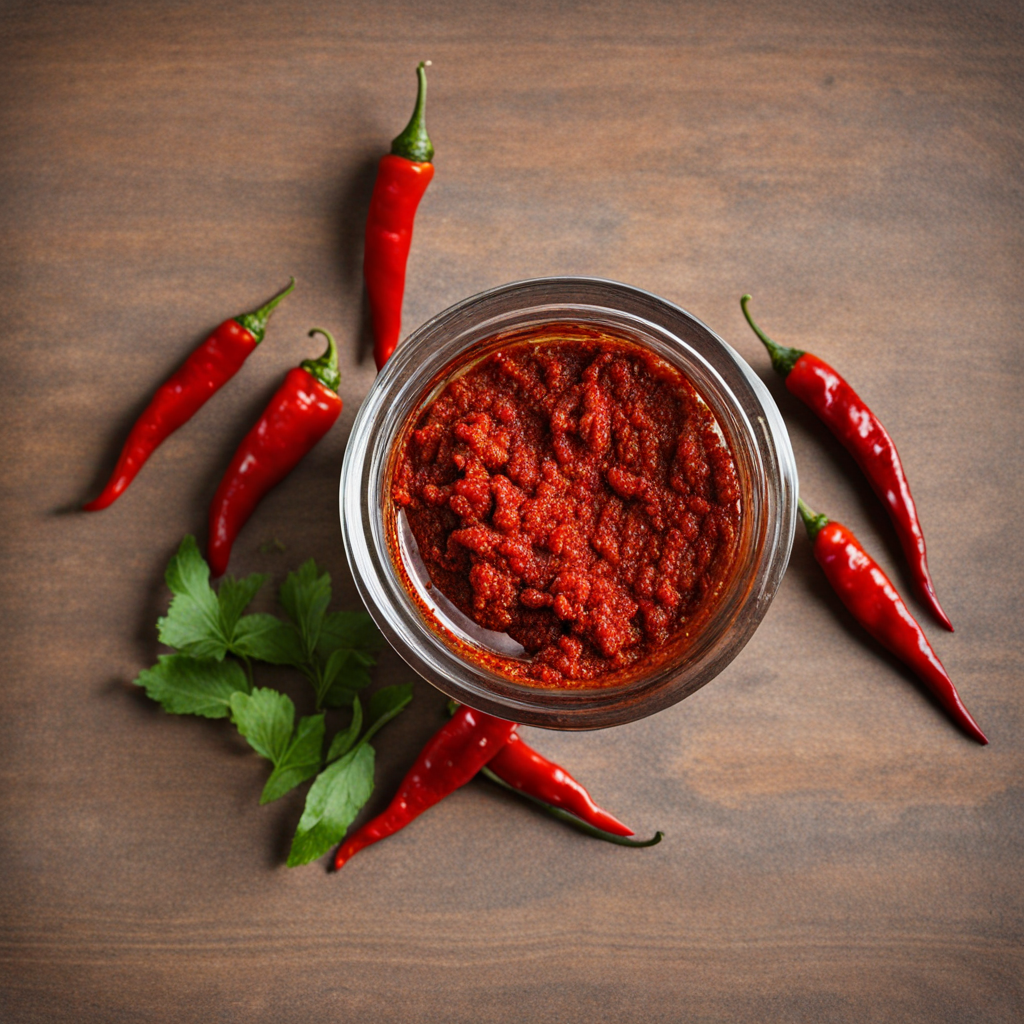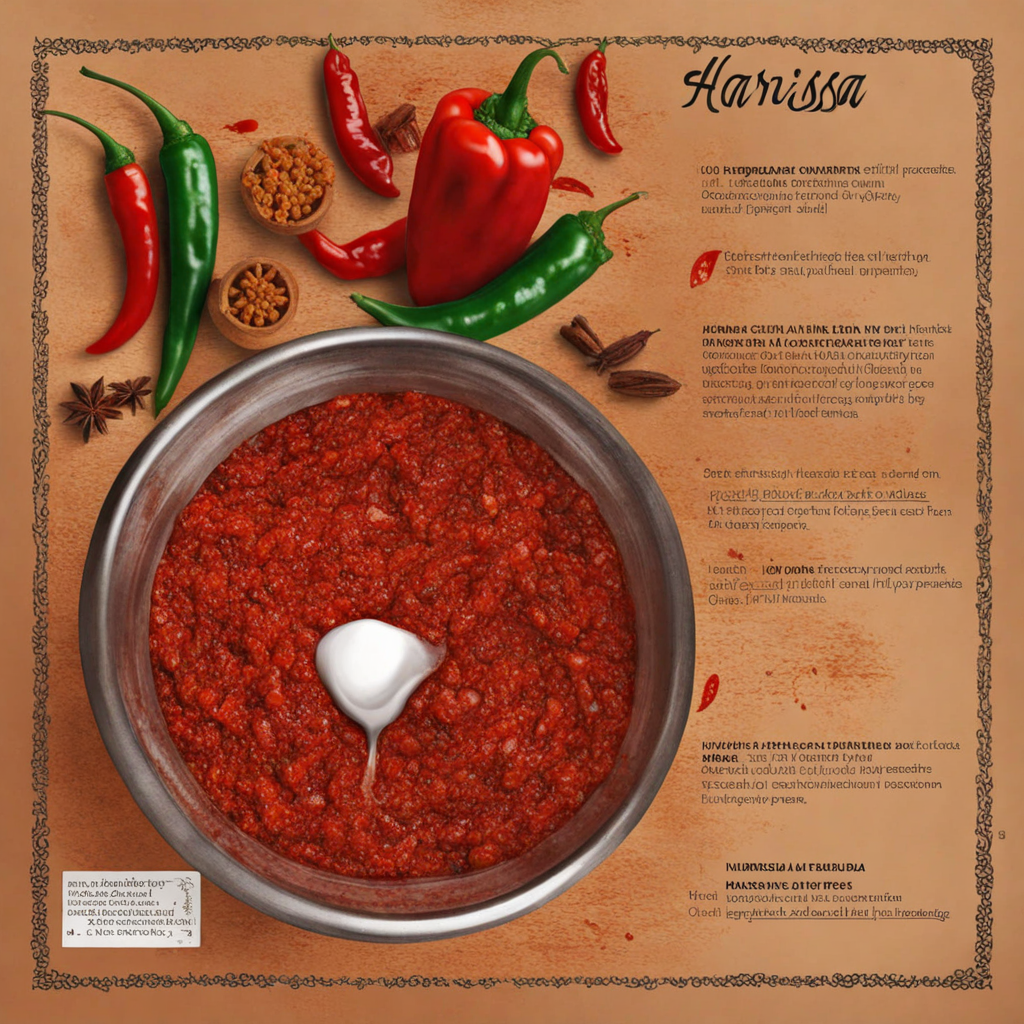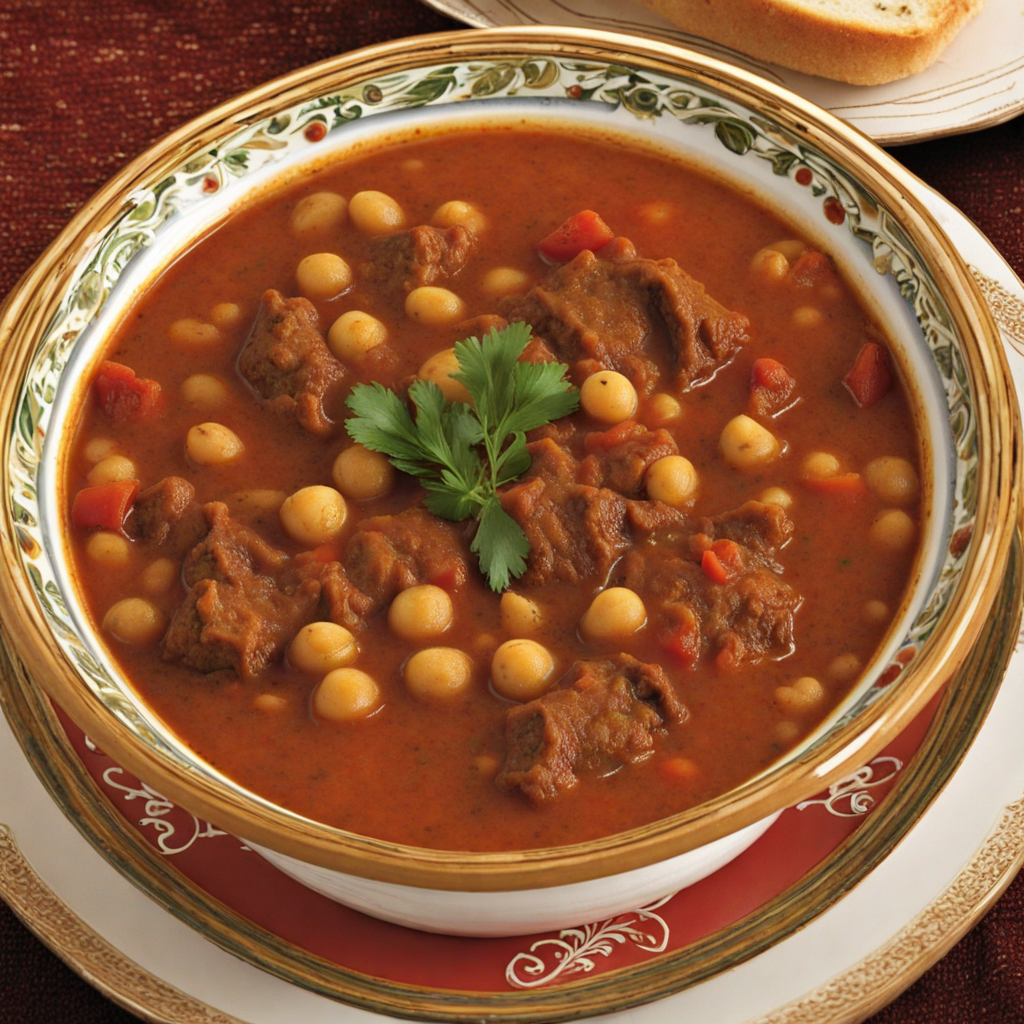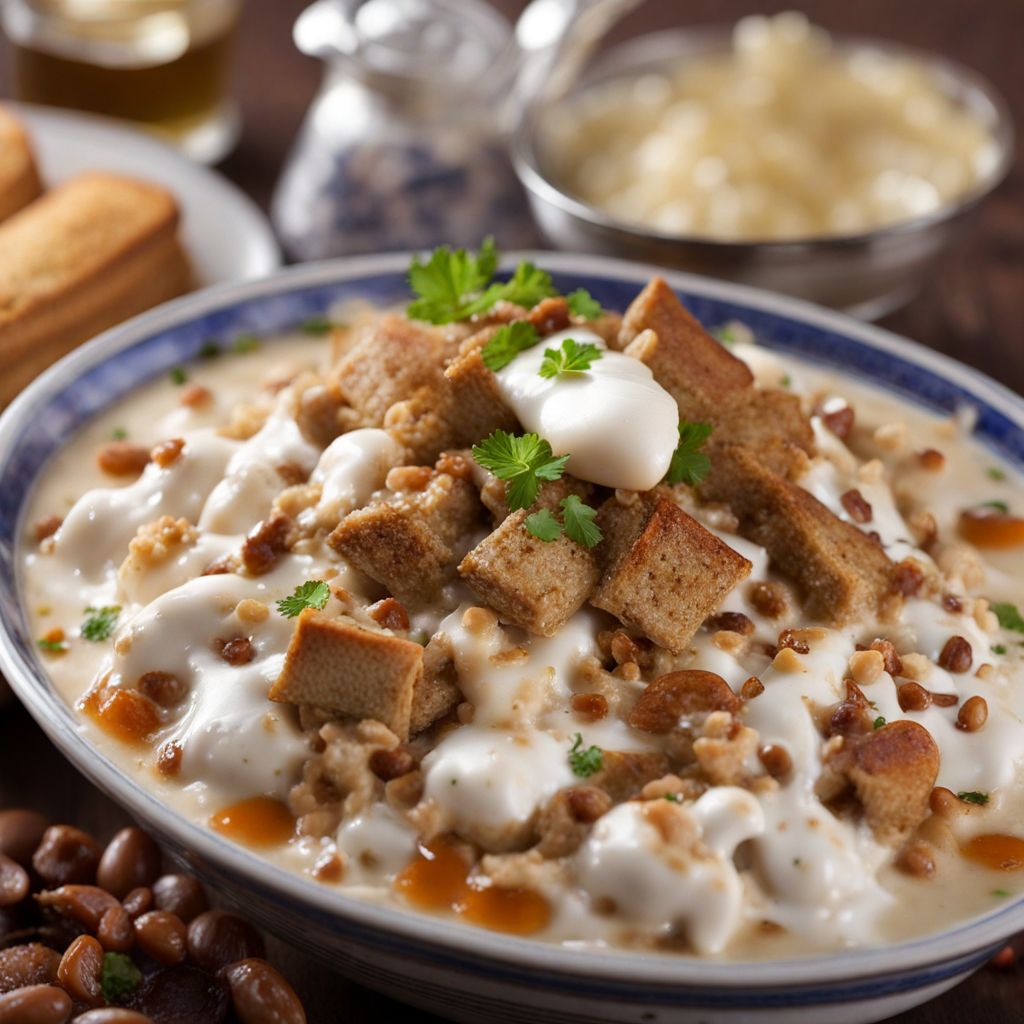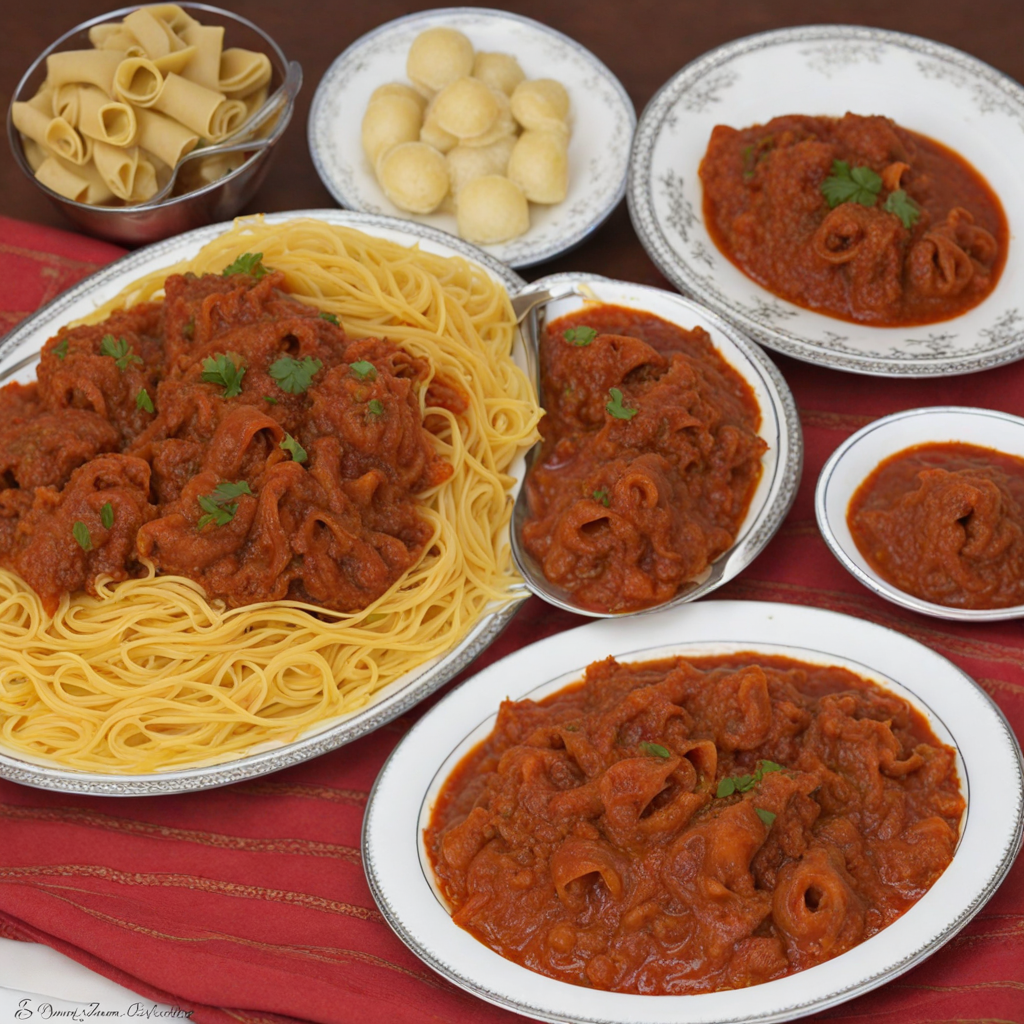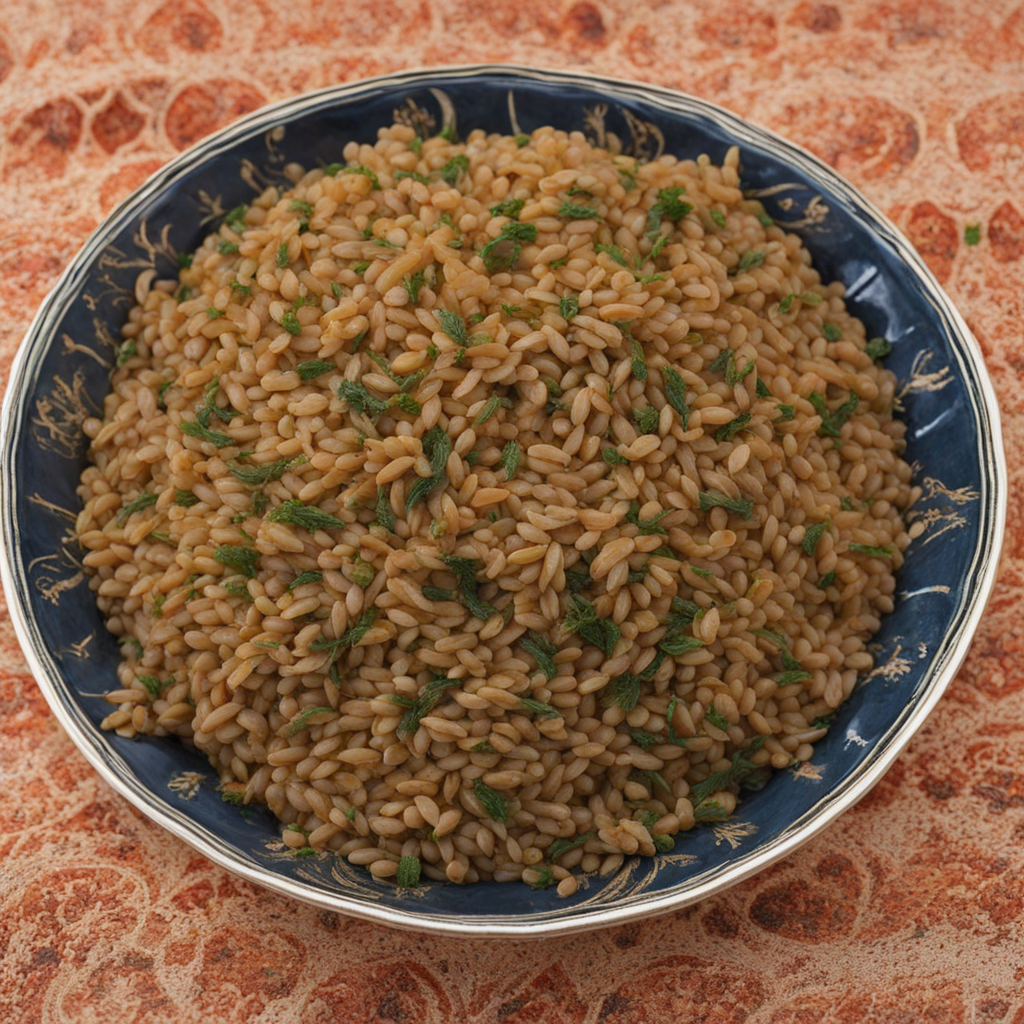Harissa
Harissa is a vibrant and aromatic chili paste that hails from the rich culinary traditions of Libya. This fiery condiment is made primarily from roasted red peppers, garlic, and a blend of spices, including coriander and cumin, which infuse it with a deep and complex flavor profile. The process of creating harissa involves grinding these ingredients into a smooth paste, often enhanced with olive oil for a velvety texture. The result is a bold and spicy blend that adds a delightful kick to various dishes, making it a staple in Libyan kitchens and beyond. In Libya, harissa is not just a condiment, but a versatile ingredient that enhances a wide array of meals. It can be used as a marinade for meats, lending them a depth of flavor that is both savory and aromatic. Additionally, harissa is often stirred into stews, soups, and sauces, providing a rich layer of heat and complexity. Its versatility extends to vegetarian dishes as well, where it can be combined with roasted vegetables or grains for a spicy boost that elevates the entire meal. As you explore the taste of harissa, you’ll find that it not only brings heat but also a unique earthiness and a hint of smokiness, making every bite an adventure. Whether used sparingly to add depth or liberally for a full-on spice experience, harissa invites food lovers to embrace its bold flavors. It is this combination of heat and depth that makes harissa a beloved addition to not just Libyan cuisine, but also to dishes around the world, encouraging culinary enthusiasts to experiment and discover new ways to enjoy this exquisite condiment.
How It Became This Dish
Origin of هريسة هريسة, also known as harissa, is a traditional dish that has its roots deeply embedded in North African cuisine, particularly in Libya. The dish is made primarily from wheat, which is ground into a fine powder, and is often mixed with meat, typically lamb or chicken, and a variety of spices. The origins of هريسة can be traced back to ancient times, where the Berber tribes of the region utilized wheat as a staple in their diet. Over the centuries, these tribes developed various methods to prepare and cook wheat-based dishes, with هريسة emerging as a notable example. The name "هريسة" itself is derived from the Arabic word "harasa," meaning "to pound" or "to grind," reflecting the traditional method of preparing the dish. The incorporation of spices such as cumin, coriander, and cinnamon not only enhances the flavor but also signifies the influence of trade routes that linked North Africa with the Middle East and beyond. Through these trade routes, spices and culinary techniques were exchanged, shaping the diverse flavors found in Libyan cuisine today. \n Cultural Significance In Libya, هريسة holds immense cultural significance, often served during special occasions and celebrations. It is a dish commonly prepared during Ramadan, the holy month of fasting, where it is enjoyed as a nourishing meal to break the fast. Its preparation is often a communal activity, bringing families and friends together, reinforcing social bonds and cultural traditions. The dish is also associated with major life events such as weddings, religious feasts, and family gatherings. In these contexts, هريسة is not merely food; it symbolizes hospitality, generosity, and the richness of Libyan culture. The act of sharing هريسة signifies the importance of community and kinship, highlighting the role of food as a medium for cultural expression. \n Development Over Time As Libya’s history has unfolded, so too has the evolution of هريسة. With the arrival of various rulers and influences, including the Ottomans and the Italians, the ingredients and preparation methods of هريسة have adapted and transformed. While the core components—wheat and meat—remain constant, regional variations have emerged, reflecting local tastes and available resources. In urban areas, for example, chefs have begun incorporating modern cooking techniques and ingredients, such as the use of slow cookers or pressure cookers, allowing for a more efficient preparation process. This modernization has made هريسة more accessible to younger generations who may not have the time or resources to engage in traditional cooking methods that often require hours of preparation. \n Modern Interpretations Today, هريسة can be found not only in Libya but also in various North African restaurants around the world, showcasing its international appeal. Chefs have begun to experiment with the dish, creating fusion variations that incorporate flavors from other cuisines. For instance, some may add ingredients such as tomatoes or bell peppers, or even experiment with vegetarian versions using lentils or chickpeas. The rise of social media has also played a role in the dish's popularity, with numerous food bloggers and influencers showcasing their own takes on هريسة. This has sparked interest among food enthusiasts globally, leading to a revival of traditional recipes and an appreciation for the dish's rich heritage. \n The Role of هريسة in Libyan Identity For many Libyans, هريسة is more than just a meal; it is a symbol of national pride and cultural identity. The dish encapsulates the essence of Libyan hospitality and the warmth of its people. During times of political upheaval and change, food has served as a unifying force, with هريسة standing out as a cherished staple that transcends social and economic divides. In recent years, as Libya has navigated its complex socio-political landscape, there has been a renewed focus on traditional foods like هريسة as a means of preserving culture and heritage. Culinary initiatives and festivals celebrating traditional Libyan cuisine have emerged, emphasizing the importance of food in maintaining cultural continuity amidst change. \n Conclusion: A Timeless Dish The history of هريسة is a testament to the resilience and adaptability of Libyan culture. From its humble origins among the Berber tribes to its status as a beloved dish enjoyed by Libyans and food lovers alike, هريسة represents more than just nourishment; it embodies the spirit of a people who take pride in their culinary traditions. As the world continues to evolve, so too will the interpretations of هريسة, but its core values of community, hospitality, and cultural heritage will remain steadfast. Whether enjoyed in a traditional setting or a contemporary restaurant, هريسة will always hold a special place in the hearts of those who savor its rich flavors and history.
You may like
Discover local flavors from Libya


